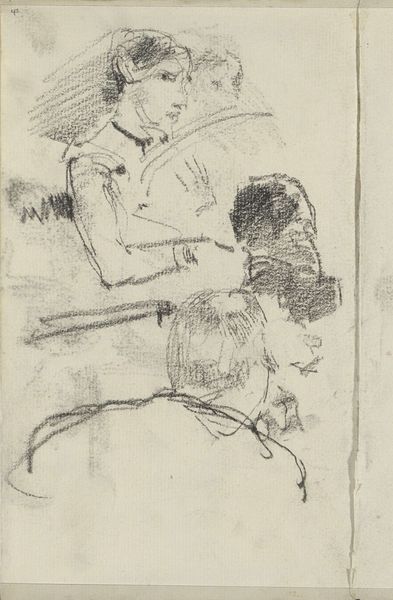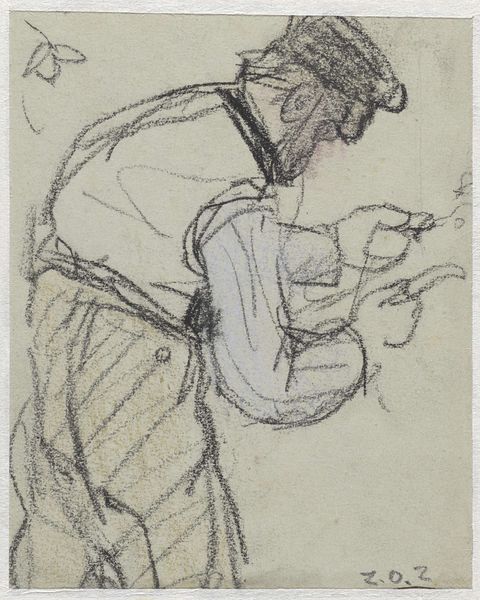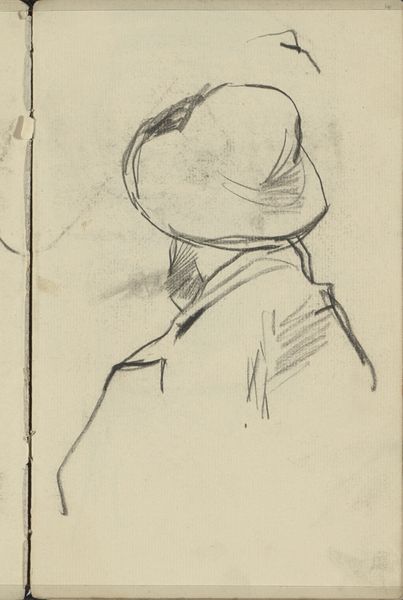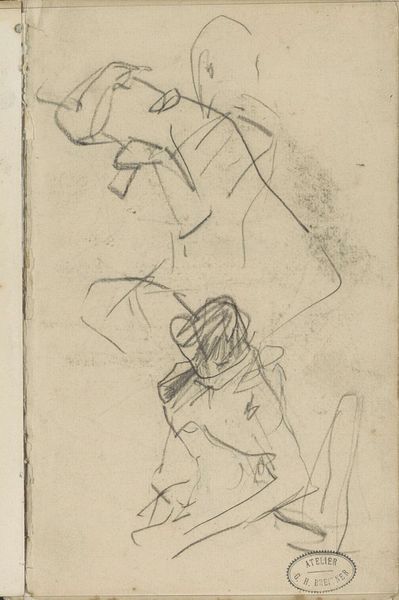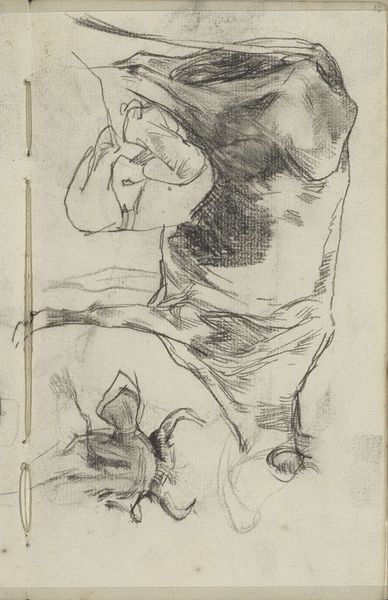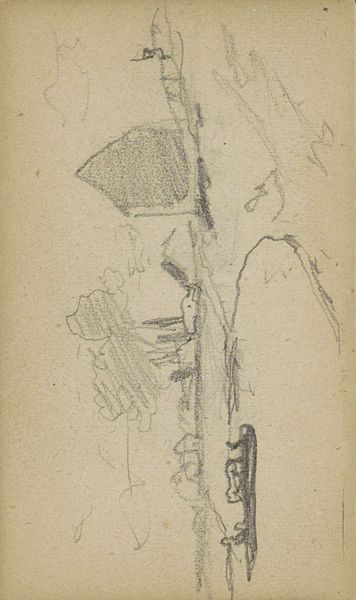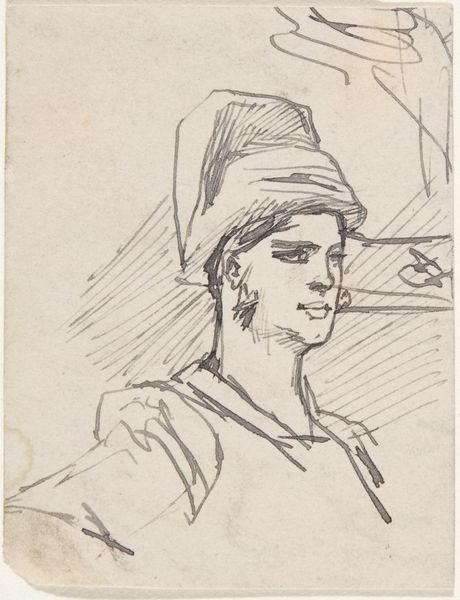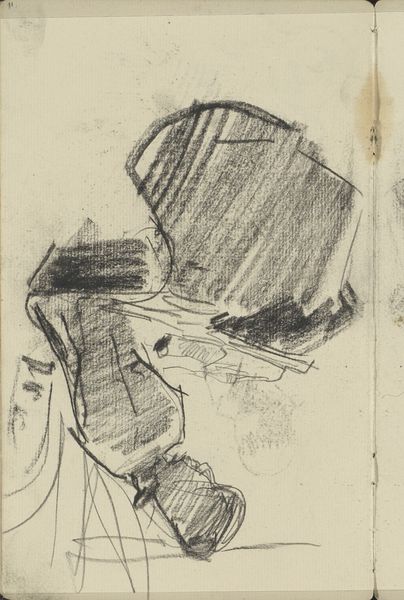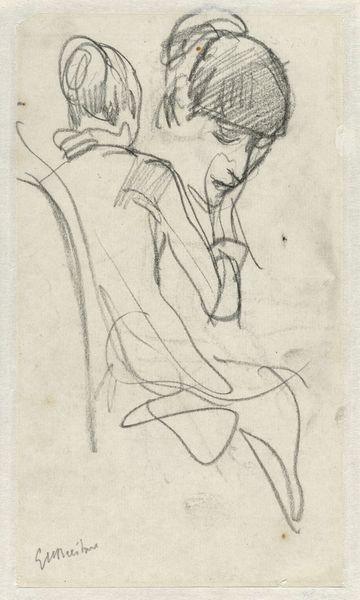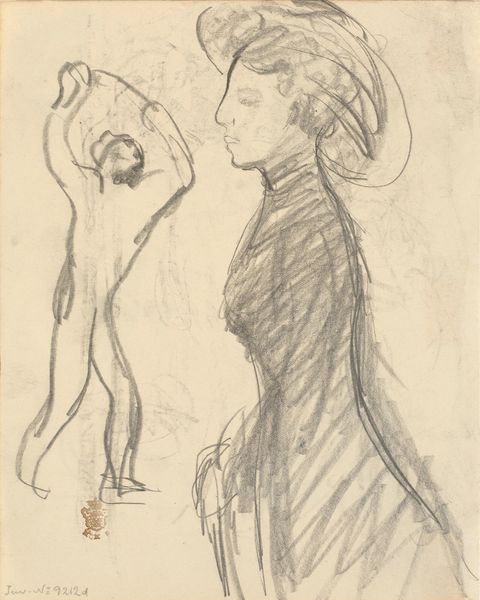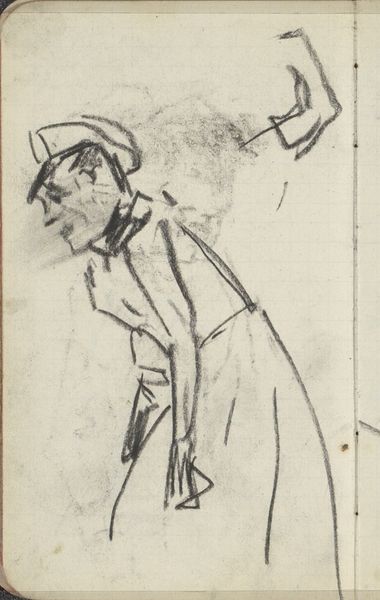
drawing, pencil
#
portrait
#
drawing
#
dutch-golden-age
#
impressionism
#
pencil sketch
#
pencil
#
sketchbook drawing
#
realism
Copyright: Rijks Museum: Open Domain
Curator: Before us is George Hendrik Breitner’s "Two Male Heads," a pencil drawing dating from around 1882, currently held at the Rijksmuseum. Editor: There's something so immediate about this sketch. Raw, almost vulnerable. It feels less like a formal portrait and more like a captured thought. The stark contrast between the darkness around the one man's face, contrasted by a lighter touch everywhere else, it suggests a hidden narrative of social inequality, like only the light falls on those with privileges. Curator: Indeed, there's a psychological rawness here, but it's channeled through the deliberate construction of familiar visual symbols. Look at how Breitner renders the upper figure. The heavy shading creates a sense of almost brooding intensity, pulling forward to draw you in. Compare that to the hurried hand around what seems to be some sort of garment on their shoulder. Editor: I agree, and it makes me think about Breitner's time. He was working amidst massive social upheaval and change in Amsterdam. I would say these portraits capture a wider reality and societal moment that's on the verge of major shift, considering how there are more abstract shapes accompanying these "male heads." But that one up top—what did his reality truly look like, in terms of representation and access to a good standard of life? And is it something that has endured to our days? Curator: Those heavy lines are powerful cues to an individual experience embedded in social circumstances, absolutely. Pencil itself as a medium adds another layer. Think about how often we encounter it. Notes passed in school, hurried planning for major projects, quick ideas scratched into napkins. It reinforces the sense of immediacy, and indeed Breitner was one to make multiple 'snapshot' portraits. This pencil drawing reflects the artistic focus toward more realist, and eventually impressionist tendencies—but what do these representations actually suggest? Are they "real" if we take the subject of "maleness" itself? Editor: It’s a powerful thought. Considering how it offers us an invitation to question the established order—art not as mere aesthetic pleasure, but as a provocation for political change and philosophical reassessment of representation itself. Curator: Exactly. Art that confronts you, disrupts you—maybe that’s what Breitner was striving for. Thank you for that perspective. Editor: It’s been insightful to delve into the many social complexities around that work with you today, exploring not just the technical and historical but those urgent and unresolved questions of representation, identity and agency.
Comments
No comments
Be the first to comment and join the conversation on the ultimate creative platform.
